
Golden Retrievers: Breed Summary and paper
Recently the fifth paper using the UC Davis canine genetic diversity panel was published by Dr. Josh Stern BS, DVM, PhD. This paper included 591 Golden Retrievers from North America and analyzed the breed’s diversity. As a result, we have decided to create a breed summary including both the information from the paper and the UC Davis breed report which includes 691 tested Golden Retrievers and was written by Dr. Niels Pedersen BS, DVM, PhD.
Inbreeding – how genetically similar are the parents of this tested sample of Golden Retrievers?
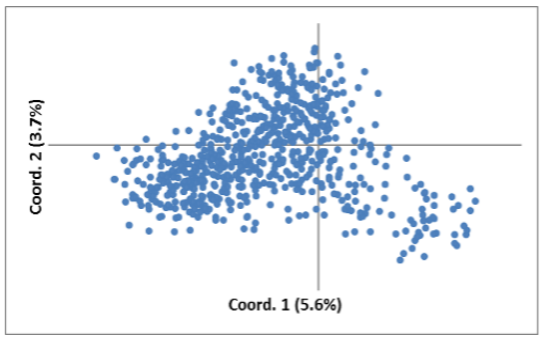
Copyright UC Davis VGL
Dr. Pedersen found the following in terms of the inbreeding values of this population:
The IR values calculated for 226 Golden Retrievers ranged from around -0.234 for the most outbred dog to +0.485 for the most inbred, with a mean value for the population of +0.041 (Table 4, Fig. 2). Therefore, one half of the dogs had IR values over +0.041 and one quarter over +0.114. Only a small proportion of Golden Retrievers were as inbred, or more inbred, than theoretical offspring of full sibling parents.
Interpretation of these results? A portion of the Golden Retrievers population are highly inbred, while the majority are more outbred. Dr. Stern’s paper also found that performance bred Golden Retrievers appeared to be slightly less inbred on average as a whole compared with conformation bred Golden Retrievers, though this was not statistically significant.
Assessing inbreeding alone in a population does not indicate whether breeders are breeding towards a bottleneck or preserving biodiversity. That requires more analysis.
Breedwide diversity
Biodiversity and allelic richness are terms we try to discuss regularly at BetterBred. These terms describe the amount of variation of genes or alleles that exist in each breed. Some breeds have very little, some breeds have a broad range. Breeds with more allelic richness and whose genetics are also well distributed throughout the population tend to be healthier. So what did they find about the Golden Retriever’s population?
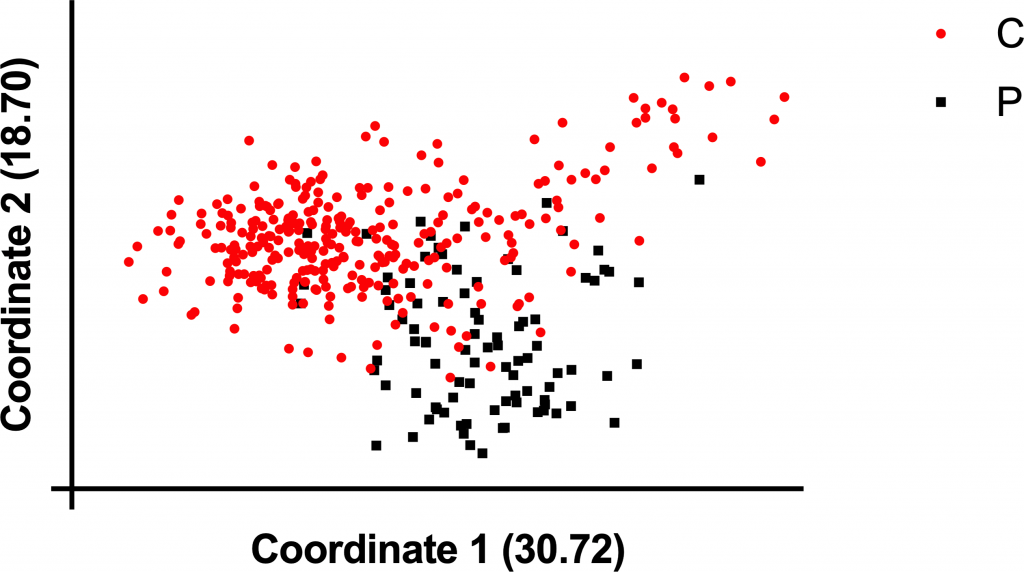
One of the interesting observations from Stern’s paper is the differences between performance and conformation bred Golden Retrievers.
Dr. Pedersen noted the following about this population
Although the bulk of the 691 dogs cluster around the intersection of the two coordinates, there are several dogs that appear more distant. These are often referred to as genetic outliers. Because they are somewhat genotypically different, they are likely to possess phenotypic traits that differentiate them from the more tightly clustered dogs. For instance, they may have been selected more for performance in field trials or hunting rather than for conformation or simple companionship. This could be confirmed by testing Golden Retrievers with known performance, conformation or performance/conformation types.
This observation can be further analyzed by reviewing the PCoA from Dr. Stern’s paper to the right, which shows the differentiation based on performance and conformation dogs tested.
But what about biodiversity or allelic richness? Golden Retrievers have a lot biodiversity in comparison to other tested breeds, comparable to Miniature and Standard Poodles. However, it appears this breed has a significant genetic bottleneck as discussed below.

Average alleles per locus and effective alleles per locus are aspects that we discuss in these breed reports. The closer the alleles that are effectively contributing to the breed, or “effective alleles,” are to the average alleles per locus, the better distributed the genetics in the breed are. Why would you want well distributed genetics? It keeps risk of unwanted recessive traits from appearing, lowers risk of random loss of diversity (called genetic drift) and it lowers the frequency of both simple and complex disease haplotypes that might unintentionally become more common if there were a bottleneck. The average alleles per locus in this breed was found to 8.364, while the effective alleles per locus was found to be 3.422. These numbers include the breed as a whole, but looking at conformation-bred dogs versus performance-bred dogs gives us a different view.
Interestingly, from Dr. Stern’s paper on Golden Retrievers, he noted, “We observed a higher number of effective alleles (Ne) in performance GRs than the conformation GRs (Ne = 3.54 and 3.14 respectively) (Table 1).” This finding is not atypical for other breeds in which performance bred dogs tend to preserve more biodiversity than show bred lines.
What does this mean for breeders? When effective alleles are much lower than the average alleles per locus, population can be trending toward a genetic bottleneck. This therefore suggests that the Golden Retriever breed is at risk of losing biodiversity to genetic drift.
Each breed community should make an effort to raise their effective alleles per locus. How can breeders do this? They should increase the numbers of genetic outliers in the breeding population – which sounds easy, but is hard to do without help, because pedigree based calculations aren’t very accurate at identifying genetic outliers. This is why we developed BetterBred’s breed management software and recommend that breeders select mates and puppies with higher Outlier Index (OI) than the breed average . This measurement was created to help maintain healthy distribution of breed genetics or redistribute unbalanced diversity, and still allows breeders to select for all the traditional traits they want in their dogs.
Diversity compared to village dogs
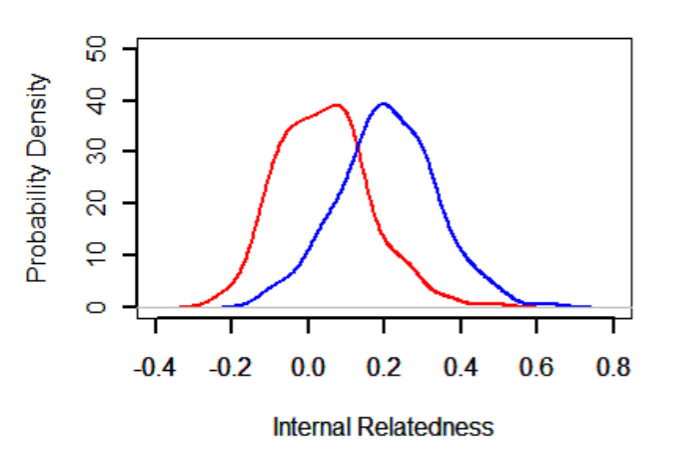
Dr. Pedersen’s hallmark comparison is to a combined population of village dogs. These domestic dogs have not been shaped by human effort, but instead have evolved through random breeding and natural selection. They therefore have a great amount of genetic diversity which is representative of the original diversity dogs had prior to the modern breeding methods. Dr Pedersen calculates the IR results using the breed’s genetic data, and calculates IR based on village dog data, called IRVD, and then compares these two sets of results. The difference between these two results illustrates the diversity that has been lost in each modern breed.
From the report:
The estimated loss of genetic diversity (~50% for Golden Retrievers -Fig. 2) that resulted during breed creation and subsequent evolution of is less than for many other pure breeds. Breeds with even small founder populations (e.g., Alaskan Klee Kai, Akita), breeds that have lost much of their genetic diversity (e.g., English Bulldog), or breeds that are overly inbred in certain bloodlines (e.g., Italian Greyhound, Standard Poodle) would have IR curves shifted even more to the right.
Translation? Golden Retrievers have maintained a lot of biodiversity as a breed in comparison to other breeds tested to date.
DLA – Dog Leukocyte Antigen
A Look at the Dog’s Immune System!
The DLA haplotypes identified by UC Davis with the canine genetic diversity test are the most widely studied and varied haplotypes in this area of the genome, which is important because it controls the immune system of the dog. In the large sample of tested Golden Retrievers, many different DLA haplotypes have been discovered! So far 26 Class I and 23 Class II DLA haplotypes have been found. This is more confirmation of the broad range of diversity still existing in the breed.
However, according to the report:
Although the number of DLA class I and II haplotypes appear large, most occur at low frequency (<1%). However, two DLA class I (1065, 1066) and two DLA class II (2046 and 2048) haplotypes, which have not yet been recognized in other breeds or indigenous dog populations, make up from 45-56% of the total haplotypes in American Golden Retrievers. These two breed specific haplotypes were undoubtedly dominant among the founders of the Golden Retriever breed and have been carefully conserved to modern time.
This difference between highly common haplotypes and many unusual haplotypes also suggests the breed is trending toward a genetic bottleneck. The high incidence of cancers in Golden Retrievers might make breeders interested in redistributing the atypical DLA haplotypes in their breed. Breeders should take note of the atypical DLA haplotypes in the population so as not to lose them to genetic drift. You can read more about using DLA in a breeding program here.
Our Recommendation
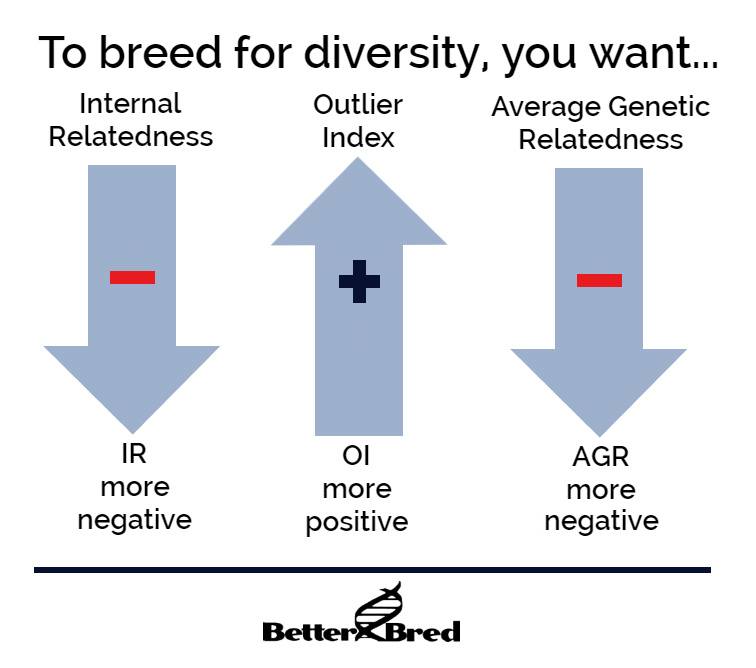
The Golden Retriever breed appears to have a lot of biodiversity, however the amount of that biodiversity that is effectively contributing to the population is low. This may have the unintended consequence of affecting breed health, as cancers (particularly hemangiosarcoma, followed by lymphosarcoma, mast cell tumor, and osteosarcoma) are a concern. Breeds that do not have well distributed allelic richness or biodiversity tend to have more breed specific health issues. We can address these risks by maximizing retention of existing genetic diversity throughout the breed.
We recommend that breeders breed to redistribute the biodiversity of the breed, so as not to lose allelic richness to genetic drift. Breed for IR at or below zero and OI at or above breed average. When all else is equal, take note of atypical DLA haplotypes and make an effort to preserve and redistribute those that are poorly represented. If you have a Golden Retriever that was tested, please create an account here, upload to our database now for a free individual analysis and take our mini course, which will show you how better to use your results.
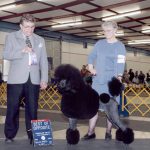 Previous Post
Previous Post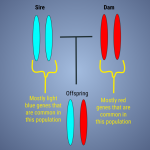 Next Post
Next Post


